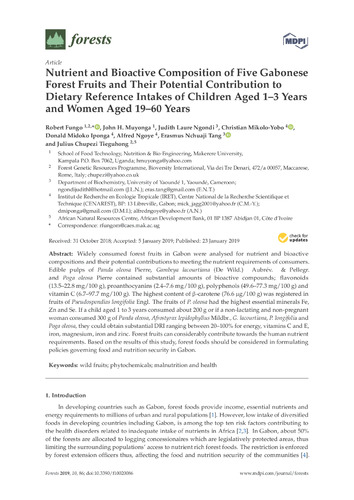Nutrient and bioactive composition of five Gabonese forest fruits and their potential contribution to dietary reference intakes of children aged 1–3 years and women aged 19–60 years
Abstract
Widely consumed forest fruits in Gabon were analysed for nutrient and bioactive compositions and their potential contributions to meeting the nutrient requirements of consumers. Edible pulps of Panda oleosa Pierre, Gambeya lacourtiana (De Wild.) Aubrév. & Pellegr. and Poga oleosa Pierre contained substantial amounts of bioactive compounds; flavonoids (13.5–22.8 mg/100 g), proanthocyanins (2.4–7.6 mg/100 g), polyphenols (49.6–77.3 mg/100 g) and vitamin C (6.7–97.7 mg/100 g). The highest content of β-carotene (76.6 µg/100 g) was registered in fruits of Pseudospondias longifolia Engl. The fruits of P. oleosa had the highest essential minerals Fe, Zn and Se. If a child aged 1 to 3 years consumed about 200 g or if a non-lactating and non-pregnant woman consumed 300 g of Panda oleosa, Afrostyrax lepidophyllus Mildbr., G. lacourtiana, P. longifolia and Poga oleosa, they could obtain substantial DRI ranging between 20–100% for energy, vitamins C and E, iron, magnesium, iron and zinc. Forest fruits can considerably contribute towards the human nutrient requirements. Based on the results of this study, forest foods should be considered in formulating policies governing food and nutrition security in Gabon.

